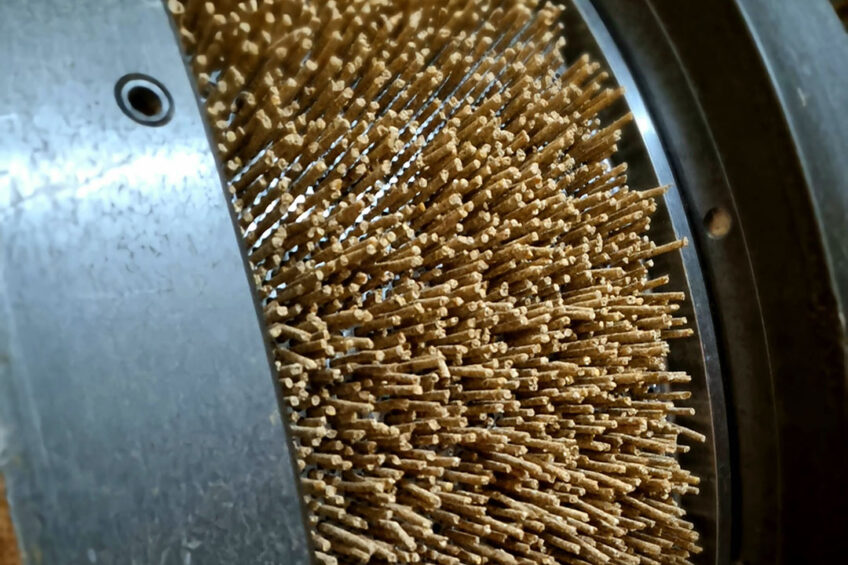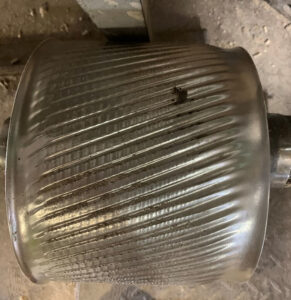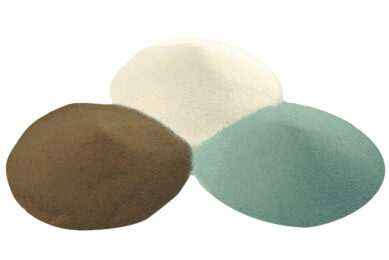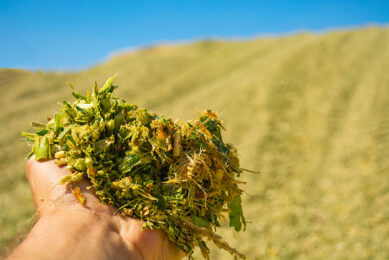Reviewing the pelleting process to ensure quality

The quality and durability of pelleted feeds are influenced by pellet shape, ingredient attributes, and feed mill processes such as grinding, mixing, cooking, moisture addition and compacting. Feed mill procedures and standards are also crucial.
Getting the grind right
About 20% of pellet quality relies on grinding. Getting the particle size right is an essential first step in feed production, as it strongly influences nutrient absorption. Particle size depends on the species being fed – poultry feeds require a courser particle size while swine or piglet feeds need finer particles.
A finer grind allows for greater heat and moisture penetration. Grinding ingredients to particles smaller than 300 microns helps improve gelatinisation during conditioning and generates a high-quality, durable pellet. The risk of brittle or broken pellets increases with coarser grinds, as gelatinisation isn’t as efficient due to the time required for heat and moisture to penetrate the particle.
Particle size should be factored into the die specification. For example, if you are using a die with a diameter of 4.0 mm but using a grinding screen with a hole containing a diameter bigger than that, you will end up regrinding your feed using the pellet mill as a grinder. This will negatively affect pellet mill performance and pellet quality. Avoid the need to regrind by checking your formulation and ensuring equipment is correctly set up for the specified particle size.
Why mixing is so important
The mixer is the heart of a feed mill. The aim of the milling process can be to finish with a pellet containing all the nutrients that the animal will consume. If your mixing quality is not being tested or checked, this parameter will be almost impossible to achieve.
Two factors that can affect mixing quality for feed mash are the particle size of the raw materials and the mixer efficiency, which is evaluated with the Coefficient of Variation (CV%). CV is the measurement certifying that any feed sample taken at the mill or any pellet consumed on the farm will contain the expected level of nutrients formulated by the nutritionist. Basic elements that influence mixing practices include the type of mixer used, its capacity and mixing time. The batch volume needs to be at the correct level. Longer mixing doesn’t mean better mixing. The sequence of ingredient addition is also important. The mixing system needs to be evaluated, monitored and tested after each modification. A good CV for a complete feed is between 5-10%. Levels above 10% suggest the need to implement improvements such as increasing mixing time or adjusting the mixer.
Why pellet durability is so important

Pellet durability (PDI) is a quality indicator that reflects the probability of the feed arriving intact for the animal to consume. A desirable PDI is above 90-95. Reaching this target helps avoid feed waste during transportation or when the feed is consumed on the farm.
Factors influencing PDI include feed formulation, granulometry, conditioning, cooling, overall equipment conditions and the compaction rate of the die, and feed composition. A higher PDI helps an animal conserve energy that is otherwise spent on picking up smaller particles. Additionally, the feed’s nutritional value is optimised as less nutrients are lost in fines due to breakage.
Die and roll conditions should be monitored. Plant managers generally consider the tonnage produced as an indicator to replace parts. Checking equipment conditions may offer a better indicator of replacement time. Figure 1 shows excessive roll wear, which can lead to lost productivity, increased slippage, and reduced pellet quality.
Leveraging moisture
Moisture affects pelleted feed’s shelf life, texture, pellet durability and starch gelatinisation (Table 1). Optimising moisture can help reduce shrinkage due to innate moisture loss in storage, grinding and cooling. Adding controlled levels of moisture during specific stages of the pellet production process can support quality, digestibility and process efficiency.
For example, adding steam during conditioning may improve the consistency of a mashed feed. Steam modifies the physicochemical properties of the feed, providing a lubricating and binding effect and increasing the feed passage rate. It also helps feed move through the pelletiser matrix, which can improve feed digestibility and reduce processing costs.
Humectant technological additives, such as Selko’s Fylax Forte-HC liquid, can be used to increase moisture penetration and binding, and starch gelatinisation. These additives provide moisture to the feed mass, ensuring that it reaches the conditioner with a humidity of around 14% to 15%. Ingredients in Fylax Forte-HC liquid can withstand processing temperatures and remain active long after feed is manufactured, transported and stored.
Many decisions can influence the quality and durability of pelleted feed. Considering the processes involved, knowing the particle size requirements of specific species, and optimising equipment set-up, can make achieving durable, high-quality pellets a straightforward practice.




